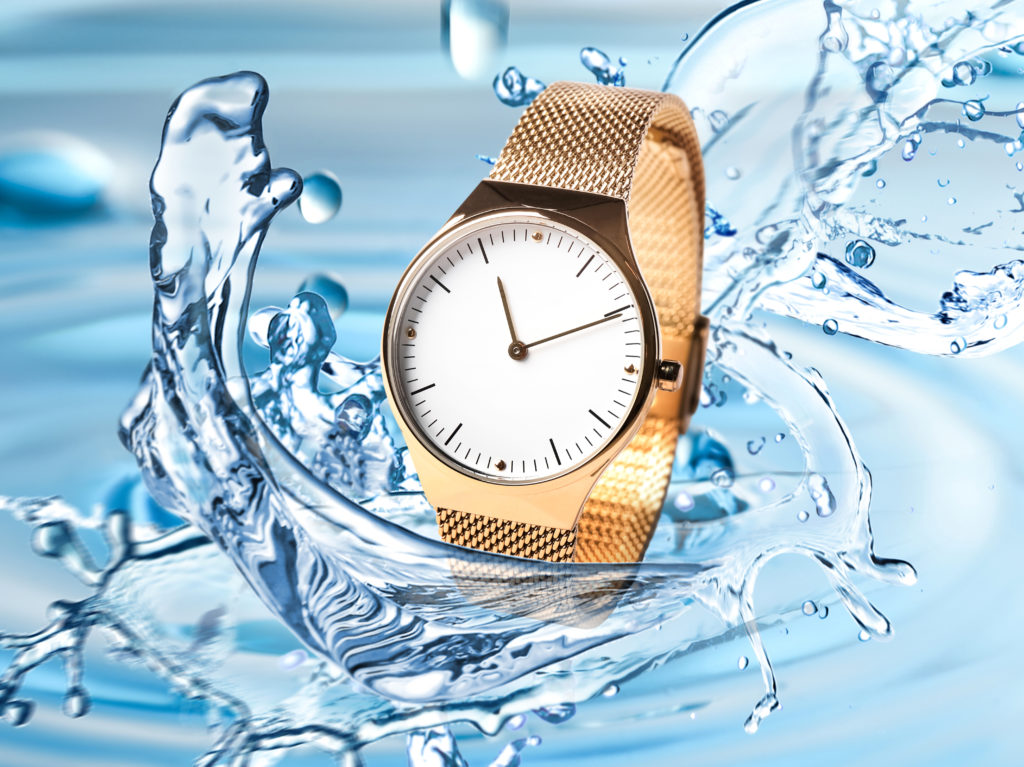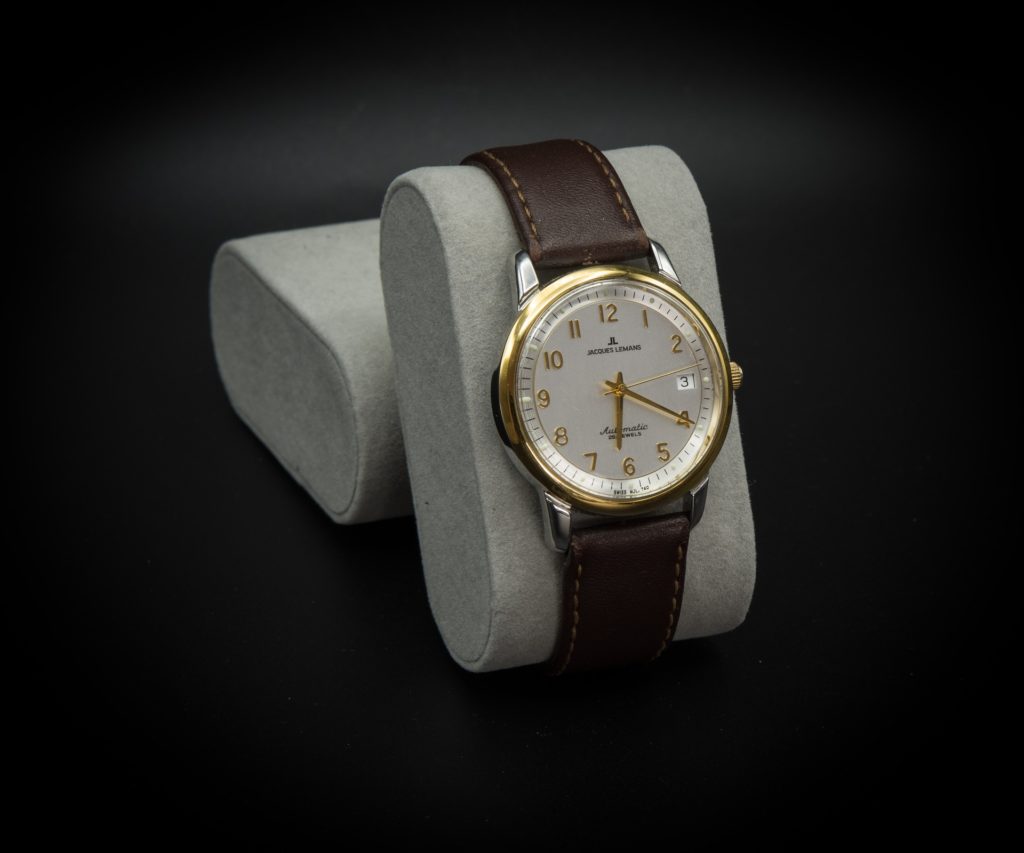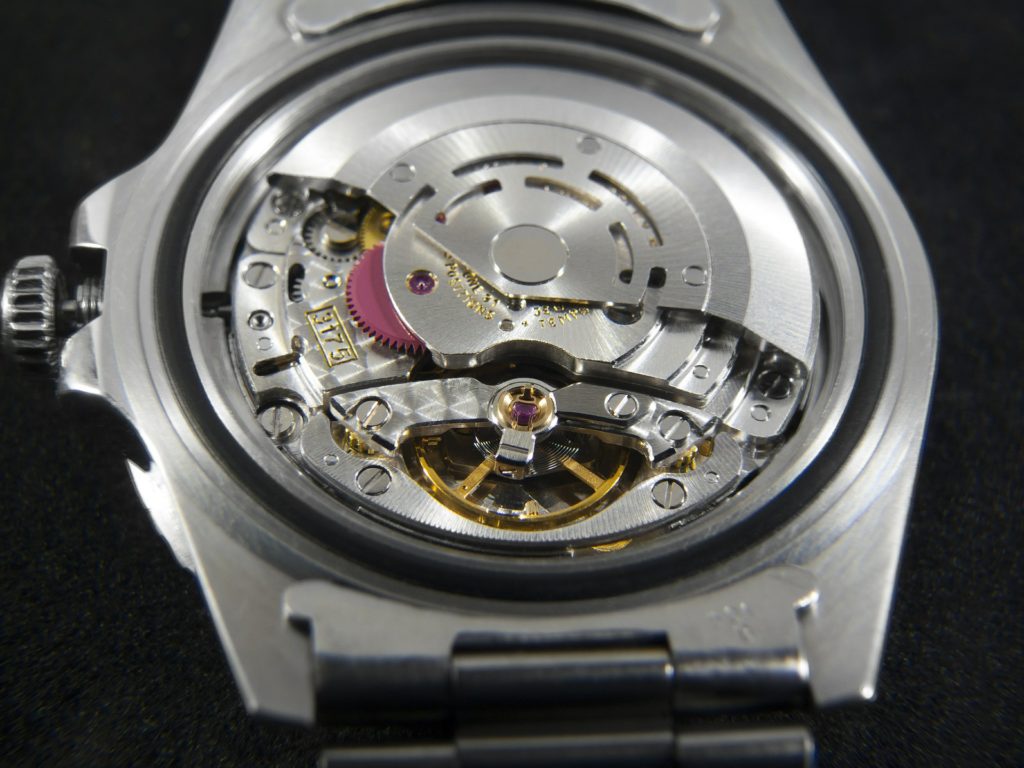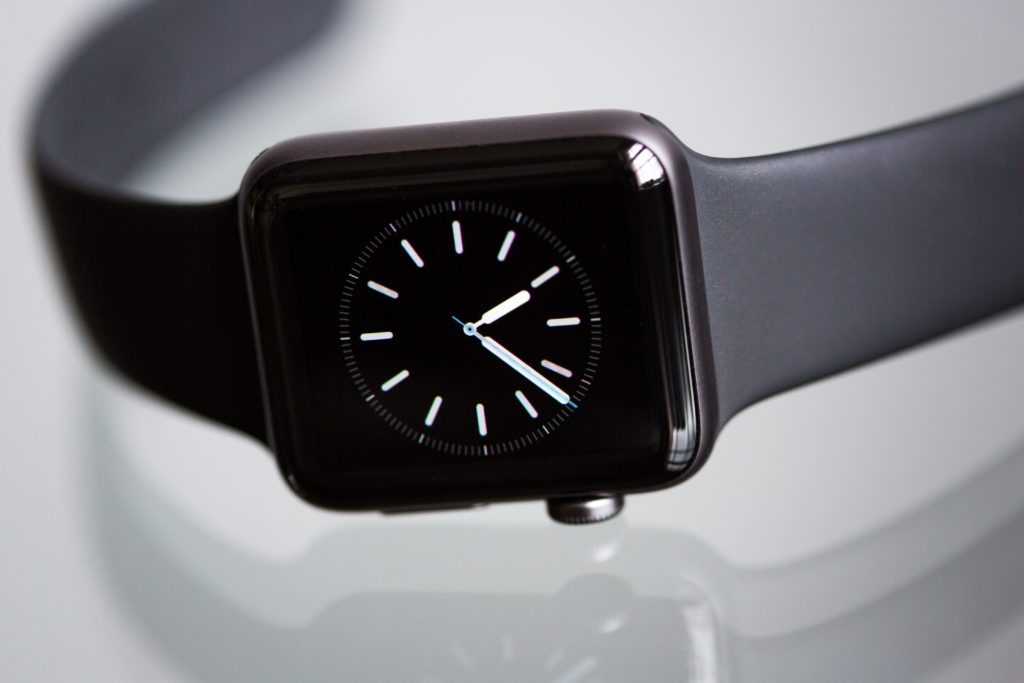Now you can listen to us read this article!
Once you get into the habit of wearing a watch, it becomes pretty hard to take it off. Thankfully, quite a few modern watches are water-resistant and even waterproof. However, does this actually mean you can wear your watch in all watery situations, including the shower?
It is not generally a good idea to wear a watch in the shower. Even if a watch is waterproof or water-resistant, it is still susceptible to wear, tear, and corrosion. Shampoo and soaps contain certain substances which, along with the humidity, could be incredibly damaging to the watch.
Not convinced? Read on to learn why showering with your watch might not be the greatest idea in addition to a few tips on repairing a watch that has suffered water damage.
Showering with a Watch 101: Don’t Do It!
As mentioned above, showering with your watch on could be potentially damaging. In fact, believe it or not, showering with a watch is often much more damaging than swimming or surfing with a watch. Why? The water itself is not the only thing that will damage the watch. The soaps and shampoos you use in the shower have chemicals and ingredients that can be incredibly corrosive (saltwater can be corrosive to watches too, though, so if you are a regular swimmer/surfer, you may want to get your watch checked regularly too).
In addition to corrosion, watches are also susceptible to damage from humidity and temperature change. If the water is too cold or too warm, it could have a negative effect on the waterproofness of the watch. Very few of us take a room temperature shower, warm water is so much more relaxing. However, wearing your watch for your warm shower could lead to water damage. But why does the temperature of the water being used matter?
Most watches are made out of metal. Metal contracts and expands according to its temperature. The waterproofing inside your watch is not designed to keep the inner workings sealed when the case has expanded. Even if your watch body is made of plastic, the inner casing is likely made of metal and will be affected by the warmth of your shower.
While you may be able to get away with showering with your watch a few times, over time, repeated exposure to the warm water and humid air will begin to corrode the delicate inner workings of your watch. Water can also break down the oils and other substances used to keep your watch functioning properly.
Additionally, while waterproof watches are designed and sealed to keep water out, they are less powerful against greasy, oily, and soapy liquids. Any of these will wreak havoc on your watch.
Different Watch Types
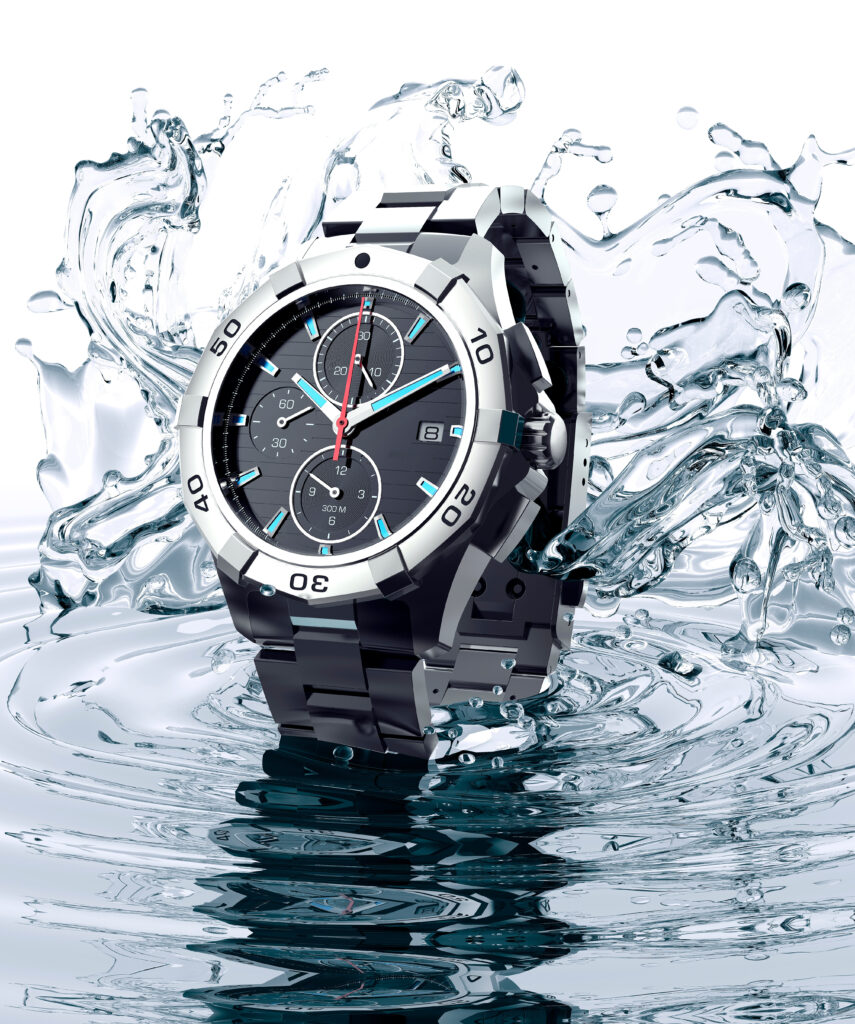
Obviously, different watches do have different reactions to water. While there is little reason to wear a watch in the shower, it is clearly easier to leave it on when jumping in. So should you wear your watch in the shower?
There may even be a few exceptions to the no-showering-with-a-watch rule. Let’s take a look at a few different varieties.
Smart Watches
While the images on the smartwatches website boast the watch’s incredible depth resistance to water, there are a few caveats.
Smartwatches contain circuits, screens, and many other electrical components. If these components are exposed to water, it could end disastrously.
Apple has stated that their watches are perfectly fine to wear in the shower; however, they should not be exposed to soaps, shampoos, conditioners, or even lotions.
The information you WON’T find on the smartwatch website is how long the water-resistant seal lasts.
Smartwatches endure a significant amount of wear and tear from bumps, drops, and shakes. Over time, each impact will wear on the waterproofing components of the watch. Just one more bump of the watch followed by a quick shower could send you shopping again.
Be especially cautious wearing a smartwatch in water if you purchase it used. You never know how well the person before you cared for the watch. If they frequently bumped or dropped their watch, it is likely that the integrity of the seals has been damaged.
If your watch is exposed to water or another liquid, rinse and dry it quickly. If the watch begins malfunctioning from water damage, place it in a bag of rice. The rice will absorb any moisture in the watch and MAY be able to save you and your wallet.
Dive Watches
When you purchase a diving watch, you expect it to be waterproof in every situation, especially a simple shower. However, you should still be cautious when exposing these watches to water. Like smartwatches, the seals inside a dive watch will wear out over time and with use.
Dive watches can also sustain damage from exposure to shampoos, soaps, and lotions. You should always remove your watch when handling any of these substances.
If you are going to wear a dive watch in the shower, ensure it has the proper ISO certification. You should also verify that the company has done significant testing to determine the water-resistance of the watch.
Since diving mostly occurs in saltwater, you might think the watch is designed to be more resistant. However, this simply means the watch needs more care and maintenance. Always rinse your watch with cool water and dry it quickly after exposure. Doing so will ensure that your watch lasts longer than a few dips in water.
Recovering From Water Damage
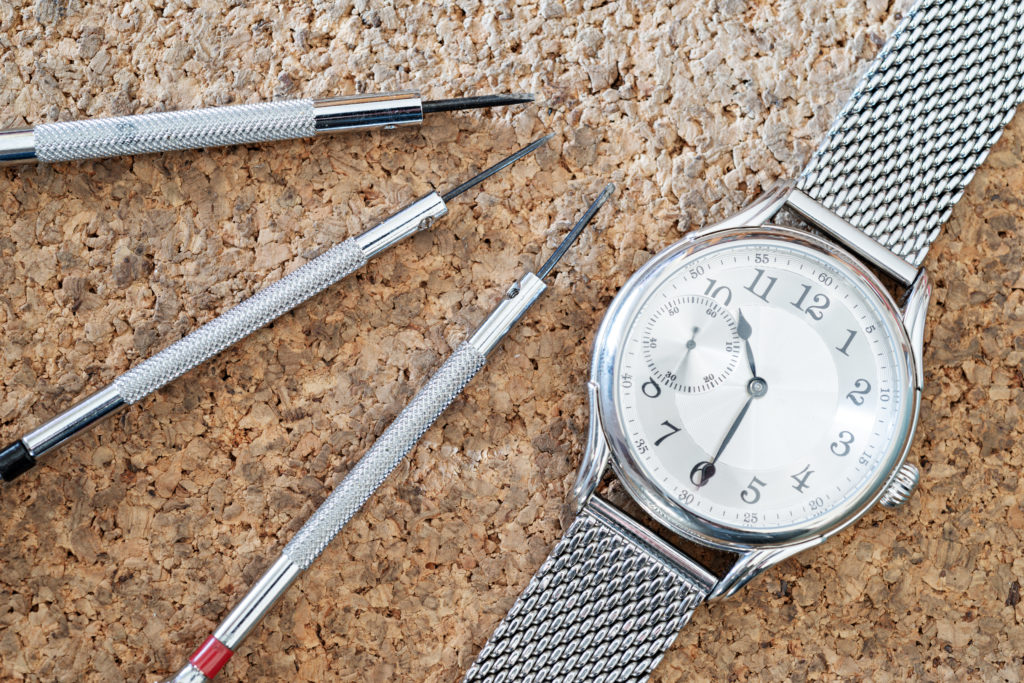
Now that you understand the risks, you may want to know what can be done if your watch should suffer any form of water damage. There is a fairly large range of things that can be done; here are a few tips!
When your watch has become the victim of water damage, there are essentially only two options: either you can try your best with an at-home repair, or you can take it to a watchmaker to have it looked at and (hopefully) repaired. If the water hasn’t been inside the watch for too long (maybe a day or two), you may be able to get away with just letting the watch dry out. Hopefully, with some time in the heat, it will turn out as good as new.
There are a dozen ways you could approach drying your watch. You can leave it on top of a radiator, under a lamp, or on a sunny windowsill. Uncooked rice is also a popular choice as you probably know. You can even use things like clean cat litter or gray clay to absorb all the moisture. If you are successful in drying it out, you shouldn’t have any more issues with it.
Be careful when using fine materials as the grains could end up inside the watch; which presents an entirely different problem.
Definitely leave the watch laying case back-side down to allow gravity to work at getting all the water out. If your watch has experienced more severe and extensive damage, you will undoubtedly have to take your timepiece to a watchmaker or jeweler to get it fixed. If you know what you’re doing, try fixing it all you want, but if you’re unsure, take it in. The last thing you need is to unintentionally make the problem worse.

